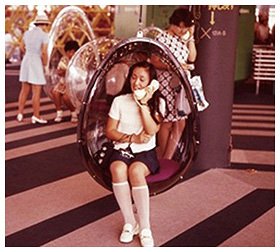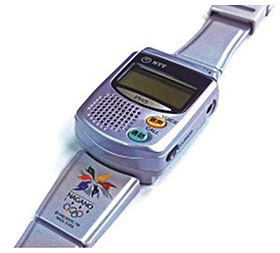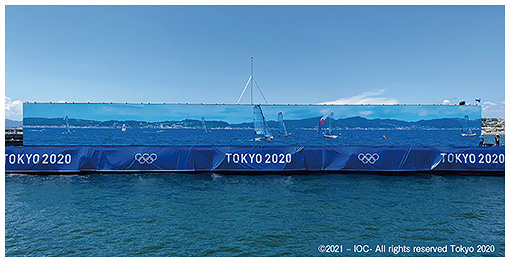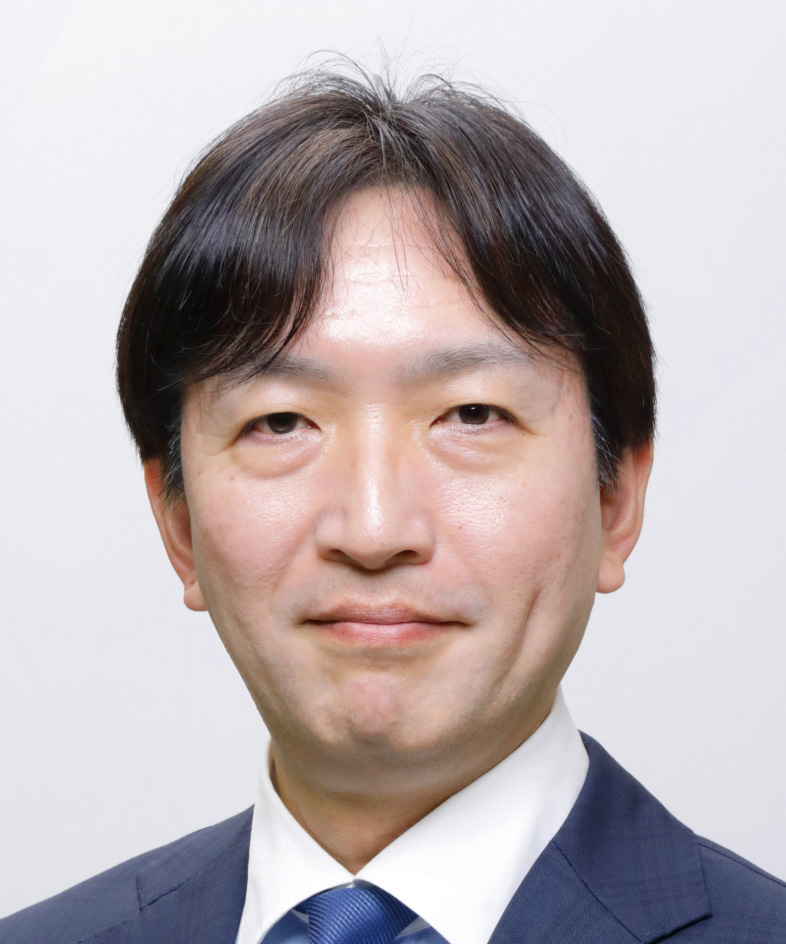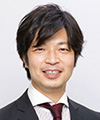 |
|||||||||
|
|
|||||||||
|
Feature Articles: NTT R&D at Expo 2025 Osaka, Kansai, Japan Vol. 23, No. 10, pp. 20–24, Oct. 2025. https://doi.org/10.53829/ntr202510fa1 Introduction: Creating a Happy Evolution through Future CommunicationAbstractThis collection of feature articles introduces NTT laboratories’ initiatives for Expo 2025 Osaka, Kansai, Japan, focusing on the NTT Pavilion and the latest technologies and their applications. This article explains the concept of “future communication that makes you feel as if someone is right next to you,” one of the messages NTT wanted to convey at the expo. Keywords: Expo 2025 Osaka, Kansai, Japan, future communication, IOWN 1. Background: Evolution and challenges of communicationToday, we can instantly connect with anyone in the world using a single smartphone. We can talk to distant family members via video calls, interact with people around the world on social media, and share information in real time. The evolution of communication technologies, such as the Internet and devices, such as smartphones, has dramatically enhanced people’s ability to connect over the past few decades. Ironically, however, this technological progress has not necessarily brought people closer together psychologically or emotionally. In fact, phenomena, such as social division and individual isolation, have become increasingly severe. The highly homogeneous connections represented by social media can reduce contact with different values and become a breeding ground for hindering social understanding and empathy. There are also many who point out that excessive information distracts people’s attention and lowers the quality of essential communication. The reliability of information and how it is shared are also issues. While anyone can become a publisher, misinformation, such as fake news and conspiracy theories, can easily spread, sometimes fueling social division. Despite advances in technology, information walls and emotional distancing still exist between people, giving rise to misunderstandings and conflicts. Against this backdrop, NTT is reexamining the meaning of “connectivity” and exploring future forms of communication that can overcome divisions. As part of this challenge, NTT participated in Expo 2025 Osaka, Kansai, Japan (hereafter referred to as Expo 2025). 2. The significance of participating in World Expos: Proposing the future of communicationAs a provider of the social infrastructure of communication, NTT has, from its origins as the Nippon Telegraph and Telephone Public Corporation, actively proposed and implemented future communication concepts through global events such as World Expos and sports competitions. At Japan World Exposition Osaka 1970 (Expo ’70), NTT demonstrated the world’s first practical wireless communication system (Fig. 1). Visitors were able to freely pick up devices and make calls anywhere in the country, thus conducting an experiment in personal communication. This marked a paradigm shift from communication received at fixed locations to communication usable by individuals in any location, laying the groundwork for later developments such as mobile phones and smartphones.
At the 1998 global sports event in Nagano, experiments with personal handy-phone system (PHS) multimedia communication and wristwatch-type PHS (Fig. 2) demonstrated the future of wearable communication. These devices, which were revolutionary at the time, are now commonplace technologies such as smartwatches and earbud-type devices.
In the unique circumstances of the COVID-19 pandemic, at the 2021 global sports event in Tokyo, NTT conducted experiments on next-generation public viewing using the latest communication technologies. The ultra-realistic communication technology Kirari! was applied to sailing and badminton competitions, reproducing the immersion of the actual competition venue in a different location (Fig. 3). By applying ultra-low latency communication technology to marathon events, we challenged ourselves to foster a sense of unity beyond distance, proposing a vision for the future of sports viewing that connects athletes and spectators.
NTT has always pursued ways to connect people more deeply. At Expo 2025, we continued to work on creating the communication of the future. This project was an attempt to explore new ways of connecting people by using next-generation technology to address issues such as division and isolation in modern society. While advanced communication technologies are becoming widespread, nonverbal elements, such as empathy and awareness, are still not fully conveyed. Communication in the Innovative Optical and Wireless Network (IOWN) era will evolve into a means of supporting essential understanding between people by responding to such subtle sensations. The NTT Pavilion enhanced the quality of connections and created diverse and flexible forms of connection, presenting the possibilities for new communication in the society of the future (Fig. 4).
3. The Future of communication: Two evolutions supporting empathy and relationshipsFuture communication is expected to evolve in two major directions. One is toward deeper empathy and psychological security through improved communication quality. The other is toward expanding the very nature of how we connect with society and ourselves through diverse relationships that have not existed before, such as dialogue with “future selves” and “spaces/environments.” 3.1 Cultivating empathy through improved communication qualityWhile remote interactions have become commonplace, there are increasing moments when people feel that the other person is not really there or that their own presence is not being conveyed. The lack of this sense of presence is contributing to isolation and misunderstanding. We believe that a communication environment that enhances the sense of shared space is one solution to this problem. For example, integrating separate spaces in real time to create an experience as if everyone were in the same room lays the foundation for collaboration and empathy. The sense of “being there” simultaneously across schools, workplaces, communities, and cultural spheres contributes to reconnecting a fragmented society. At Expo 2025, we transmitted a performance on the special stage at Expo’70 Commemorative Park in Suita City, along with surrounding spatial information, in real time. This was recreated at the NTT Pavilion in Yumeshima, providing a communication experience where participants felt as though the other person was right beside them. Details are introduced in the article “IOWN × Spatial Transmission—A Communication Experience in Which Distant Spaces Become as One” in this issue [1]. In one-on-one remote communication, sharing tactile sensations in addition to visual and auditory information is also important as a means of reducing the emotional distance between people. Feeling the warmth of a family member’s hands from a distance or conveying emotions that cannot be put into words through “touch” not only deepens a sense of security and empathy but also provides new forms of support in fields such as nursing care, medical care, and education. At Expo 2025, we installed devices capable of transmitting not only video and audio but also tactile sensations and vibrations at multiple locations inside and outside the venue. We challenged ourselves to create a “phone of the future” that enables casual communication through touch, even with people meeting for the first time. Details are introduced in the article “Questioning the Nature of Communication through the ‘Fure-au Denwa’ and ‘Denwa for Listening to the Universe’ Exhibits—From the Telephone to Vibrotactile Communication Media” [2]. These advancements are not merely aimed at making remote communication feel more “real,” but rather at fostering a deep connection where people can genuinely feel that their hearts are connected, thus cultivating empathy and a sense of security. 3.2 Building new relationships through diverse communicationAnother direction is the reconstruction of relationships with things that previously had no connection. With the advancement of artificial intelligence (AI), connections between people transcending language and cultural differences, as well as connections with oneself and one’s surroundings beyond traditional boundaries, will become the key to creating new relationships. Communication with oneself through AI, such as digital humans, is a prime example of this. By engaging in dialogue with one’s past, present, and future selves, individuals can become aware of their values, goals, and changes, promoting deep introspection and self-affirmation. Such communication with oneself not only contributes to mental stability and self-growth but also serves as a foundation for more mature relationships with others. At Expo 2025, we challenged ourselves to provide a communication experience that enables people to discover new possibilities within themselves through dialogue with Another MeTM, a digital alter ego. Details are introduced in the article “Another Me Planet—An Alter Ego That Shows Potential Future Self” [3]. Communication with architecture and cities that respond to emotions is a new trend. Interactive environments where light, sound, and spatial composition change in response to people’s emotions make it easier to visualize and share inner feelings, thus fostering emotional connections with others. At Expo 2025, we analyzed the expressions and excitement of visitors to the NTT Pavilion and reflected the results on the pavilion’s façade (curtain), artificially causing the curtain to sway. When people outside the pavilion notice the swaying curtain or sound, they become interested in the NTT Pavilion, creating a connection between the inside and outside. We have implemented this technology, which serves as pioneering for a future where diverse people can connect through such objects. Details are introduced in the article “A Pavilion Clad in Emotions: Harmonized Communication Experiences between People and Objects” [4]. In addition to exploring new relationships between self and objects, the NTT Pavilion introduced new technology that transcends language barriers. Using cross-lingual speech-synthesis technology, we generated multilingual audio from the voice of a famous athlete in a single language, enabling introduction announcements in six languages. This technology enables information transmission that transcends language barriers while maintaining voice quality, contributing to the establishment of relationships with diverse audiences. The possibilities for communication that connects people worldwide through voice alone are expanding. 4. In conclusionEfforts toward future communication are not merely about showcasing cutting-edge technology. What we proposed at Expo 2025 is a question about how to rebuild new relationships between people, between people and space, and even between people and objects. In the society of the future, communication will be designed not simply on the basis of technology but in harmony with human sensibilities, ethics, and culture. For example, AI could understand human emotions and make conversations more natural. Sensors could provide detailed feedback on spatial responses, enabling reassuring dialogue. Such technologies have the potential to function not as cold, mechanical tools but as devices that bring out the humanity in us. We envision a human-centered future and are exploring ways in which technology can grow alongside society: a society where diverse people transcend divisions to understand and collaborate with one another. Our mission is to propose new forms of communication that will serve as an infrastructure enabling such a society. Expo 2025 was the first step toward actualizing this vision. Looking ahead to the next 10 to 20 years, we will continue to bridge the gap between technology and humanity to achieve a truly connected society. References
|
|||||||||

